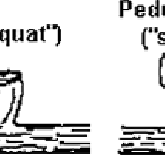Warts on cattle

Cow with cutaneous facial warts
DAFF

Common warts on the skin

Common warts on the teats
The 4 most common types of warts are squat, pendunculated, flat and tags (Figures 2 and 3). They appear as raised hairless lesions (varying in size from a pea to a tennis ball).
Cause
A papilloma virus
Other names
- Infectious papillomatosis
Distribution
Warts can occur on cattle anywhere in Australia.
Hosts
Cattle warts (infectious papillomatosis) are caused by a host specific papilloma virus that is rarely serious but causes warts to appear on the skin of the animal.
Life cycle
The time taken for warts to develop after infection can be from 1-12 months.
Affected animals
- cattle
Clinical signs
Warts are usually confined to the neck and shoulder region but may be formed on other areas such as teats and penis. Cattle under 2 years are most susceptible and the condition usually clears up within 6 months without any treatment.
It is common for large warts to bleed especially if rubbed or knocked, and this can result in bacterial infection that may require treatment. In chronic infections some animals may lose condition, be stunted and very rarely death may occur.
How it is spread
The virus gains entry through any skin abrasion.
Monitoring and action
If nothing is done, moderate wart infections will clear up without treatment. Large pendunculated lesions may be removed either surgically or by tying off using a suitable ligature around the base. Alternatively, a wart ointment is available through veterinary suppliers and may be a useful treatment.
Should any doubt arise as to the seriousness of the wart infection in your cattle, contact your local veterinary surgeon.
Control
On properties where warts are considered a problem, mustering and handling of young stock should take place before visible lesions appear.
A wart vaccine that was registered for use in Queensland was withdrawn by its manufacturer in June 1990. No vaccine is currently registered for use in Queensland.
This virus is very infectious and infected animals should be kept separate, if possible, from healthy stock. Mustering, yarding, dipping and other husbandry practices should be kept to a minimum during any noticeable outbreak of warts.